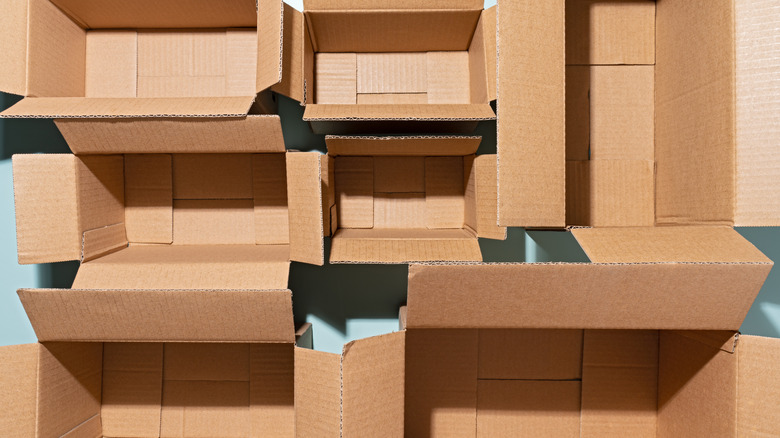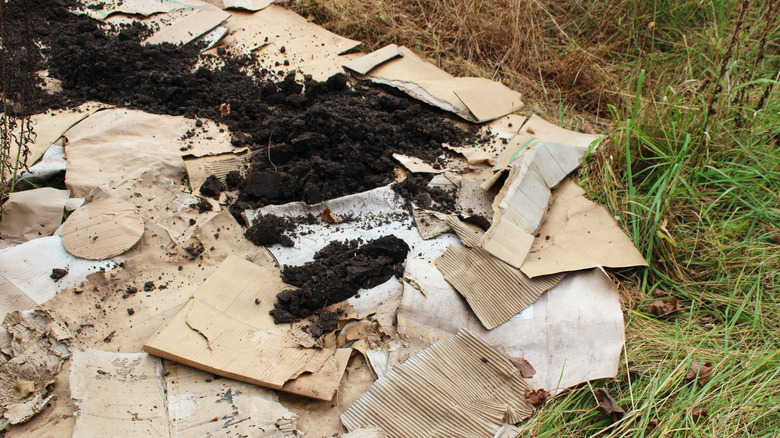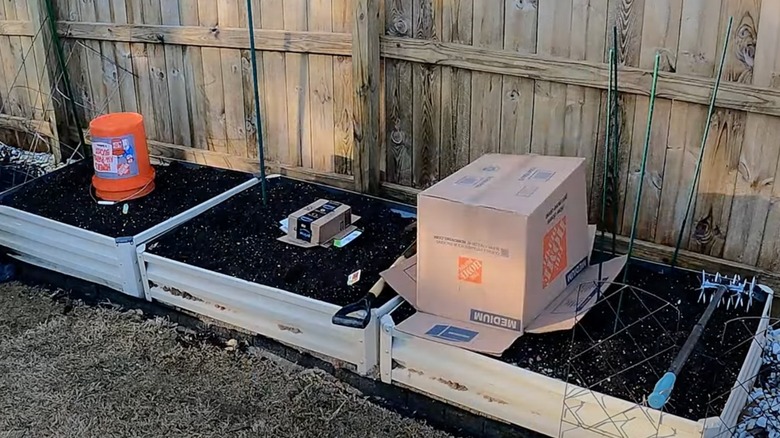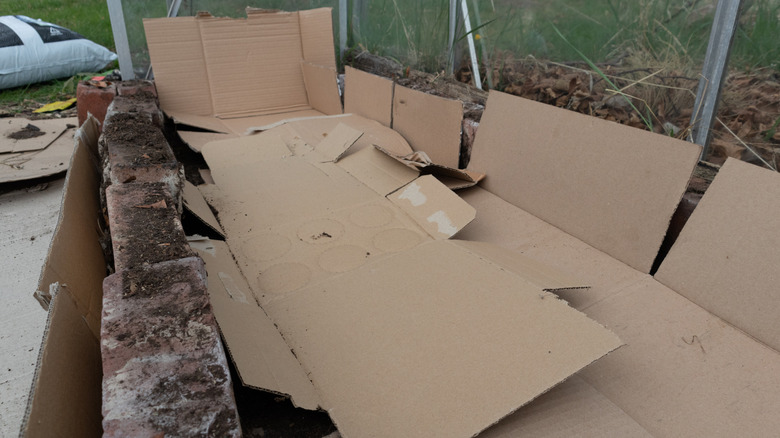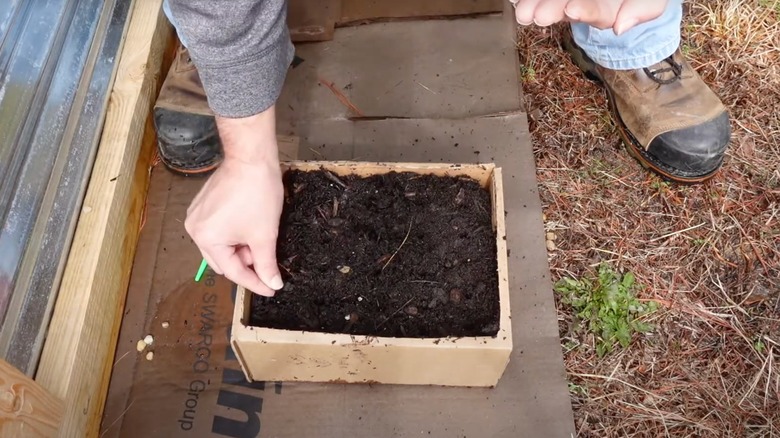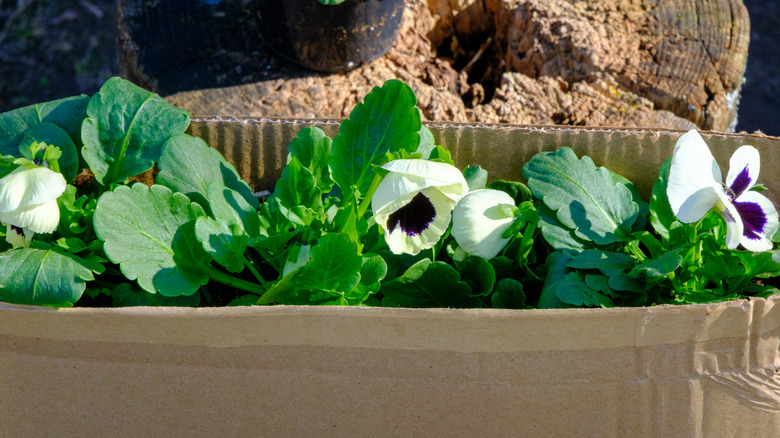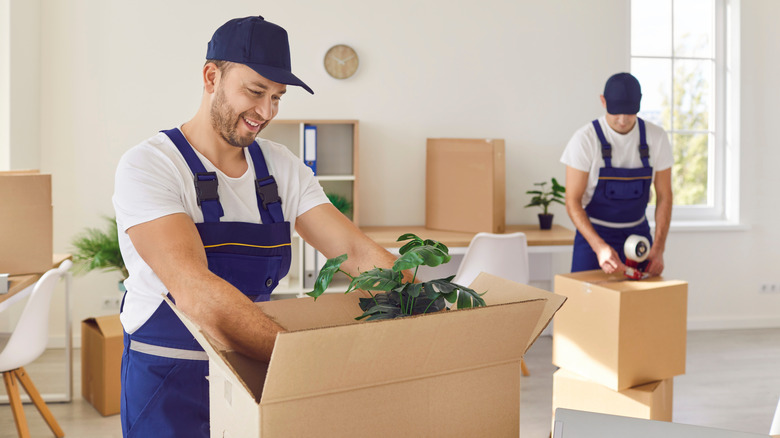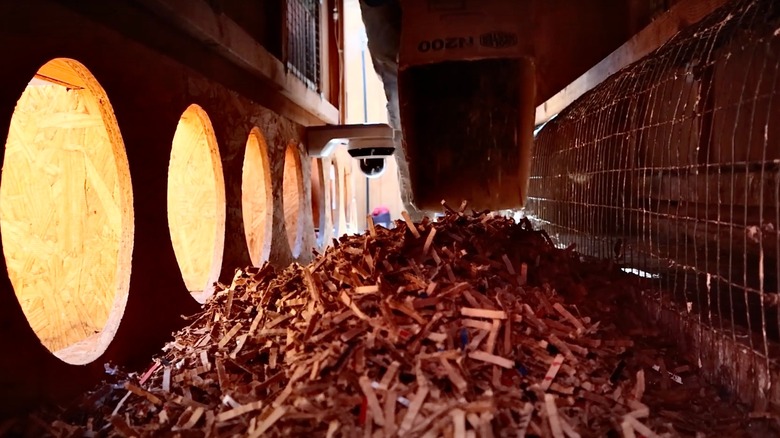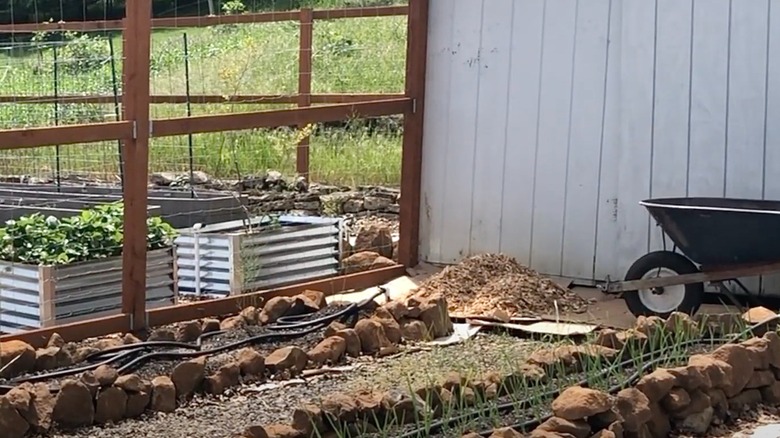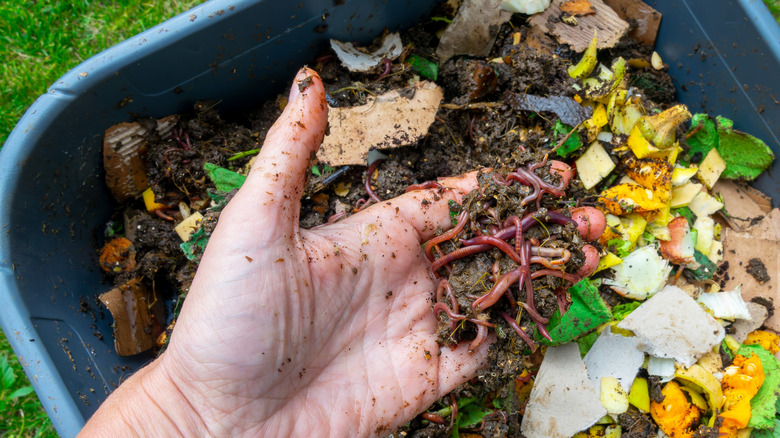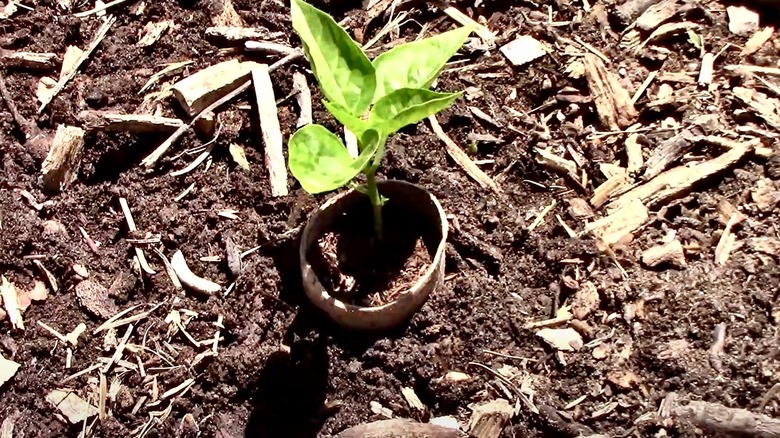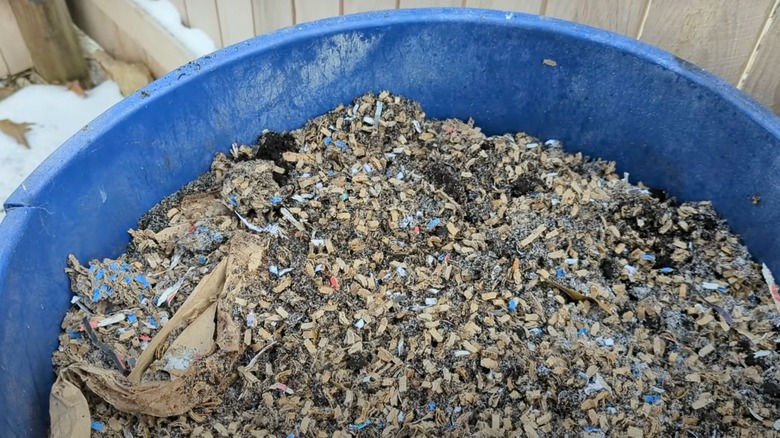Make Big Changes To Your Yard And Garden With These 12 Genius Cardboard Box Hacks
We may receive a commission on purchases made from links.
It's almost impossible to avoid ordering something online every now and then, which can mean the average person seems to have more cardboard boxes than they know what to do with. Instead of just recycling them, however, why not find a smart way to repurpose your cardboard boxes in your garden? From adding them to your compost pile, using them to attract worms, or even preventing weeds from growing in your garden, cardboard has so many amazing uses — once you're done reading this list, you'll probably feel like you don't have enough of it!
Most of the options we've rounded up will require you to either shred or break down boxes. However, we've made sure to also include a few hacks that keep your boxes intact for an easy DIY, and make them available for yet other uses. Cardboard boxes of any size can find a new life with a quick upcycling project from this list.
Before you add your cardboard boxes to the garden, take care to remove any tape or shipping labels, especially if you're planning on composting them. Shiny and plastic-coated cardboard boxes are generally unsafe to compost. Most inks that you'll find on cardboard boxes are soy-based and safe for your soil, but if your box looks very shiny or glossy, it may have been treated with something that either won't decompose easily or could leach chemicals into your garden soil.
Use cardboard as a weed blocker
Pesky weeds poking through your soil or mulch isn't what any gardener wants to have to deal with. However, you can smother weeds for good with a simple cardboard hack: A layer of cardboard boxes. Cover the weed-prone area you want to plant in with a dovetailed or overlapping layer of flat, plain brown cardboard, and soak them with water. Add mulch or potting soil on top and leave it all to decompose. The cardboard will stop any weeds trying to grow beneath it, leaving you with a weed-free yard, without using herbicides.
Help keep plants warm during winter
Did you know you can reuse your old cardboard boxes to protect your plants during winter? If you are surprised by a sudden frost, you might not have supplies on hand to insulate your plants. That's where cardboard boxes come in: Turn them upside down and place them over fragile plants. Make sure the boxes are large enough they aren't touching the plant. If possible, add another layer by covering boxes with a plastic tarp or garbage bag. They'll prevent frost from forming on top of the plants and should provide them with enough insulation to keep them safe in the short term.
Line garden beds with cardboard
Raised garden beds are generally designed to be bottomless so your plants can grow as deep as they need to. Of course, that also means that weeds will eventually find their way into your garden bed. To help prevent this, layer cardboard on the bottom of your raised garden bed, creating a cardboard base for the entire bed. This will protect your plants from weeds (and kill any grass under the bed), without deterring plants from stretching their roots.
Plant your seedlings in cardboard boxes
Seedlings don't have to be expensive to start; all you need is a cardboard box. Mix your potting soil up and fill an old cardboard box with it, then plant your seedlings inside. You can utilize multiple boxes to help you separate and keep track of your seedlings; miniature cardboard boxes can also help you plant small seedlings individually. They'll have plenty of room to grow until they're ready to be planted outside.
Use cardboard as biodegradable planters
You might not have thought to use cardboard for planters, but an old cardboard box can make a wonderful seasonal planter. Need to overwinter a plant in a hurry? Fill your box with potting soil and your favorite plant; just make sure that the box gives your plant enough room to grow its roots. You could even decorate the box with biodegradable paint, like the colorful powders from Old Fashioned Milk Paint. Once your plant has died off or is ready to be transplanted outside, the cardboard box can be composted.
Store and organize garden tools
Who says DIY garden storage can't be budget-friendly? An old cardboard box (or several, depending on how many tools you have) is all you really need. To create open-faced storage, cut off the top flaps off the box so you can see inside. You can then use these flaps to make cardboard dividers for the box's interior to help organize your gardening tools. You could paint or decorate it to make your toolkit a little more chic. Finally add a wire or plastic bag handle to make it easy to carry from plant to plant.
Save your cardboard boxes to move delicate plants
Having a cardboard box that's on the small side can be helpful if you ever need to move any plants around. For those who take their plants with them when they move or have a large collection of indoor plants, trying to transport them without tipping them over can be stressful. Take a box that's just a little larger than your plant pot (even better if the walls of the box are tall), and use it to transport your favorite fragile plants stress-free.
Shred cardboard for your chicken coop
Did you know chickens can benefit from shredded cardboard bedding? Sand and straw can shed loose particles when they're poured into a coop, which could irritate your chickens. Cardboard doesn't pose that problem. Your chickens won't be inclined to eat it (be sure to shred the cardboard into large pieces), they'll enjoy how comfortable the bedding is, and you won't need to spend any money (you just need a sturdy paper shredder). Since cardboard is biodegradable, just add it to your compost bin once it's time to replace the bedding.
Help design the perfect garden path
Planning on DIYing your own garden path in the near future? Whether you're hoping to go for gravel, mulch, or wood chips, a cardboard base is a must-have. Laying down broken-down cardboard boxes will help you determine the exact shape you want your path to take, and see the area you want it to traverse. Moving cardboard is a whole lot easier than moving pavers, after all. When you determine a path, create an overlapping layer of cardboard and put your pathway material down directly over it to prevent weeds from sprouting.
Add shredded cardboard to your worm bin
Worms are a great boon to any garden: They give your soil more nutrients, help aerate it, and can even improve soil drainage as they tunnel through the dirt. Give back to your worms by adding some cardboard to your worm bin. You can tear it into smaller pieces to help absorb any extra moisture, or add it as a larger top layer. Cardboard makes for great brown matter when composting (as much as 30% of total vermicomposter materials is recommended), and will improve airflow for your beloved worms.
Use spare cardboard to protect your harvests
If you have a small cardboard box or spare cardboard flaps, you can use them to protect your veggies from pests. This is traditionally done with paper towel or toilet paper tubes, but you can roll any plain cardboard piece up into a tube, then tape or glue it together. You will then place this roll around young, delicate plants or seedlings. This will prevent common pests — like slugs or cutworms — from attacking your plants. Remove it once your plants have grown enough to not be as vulnerable to pests.
Use cardboard in your compost bin
Composting your cardboard is one of the best ways to make good use of it in the garden. You will often need three times as many pieces of brown matter (including brown plant material such as paper, dried leaves, and cardboard) compared to green matter (veggies and egg shells, for example) for your compost. Shredding cardboard and adding it directly to your compost can help easily achieve that level of brown matter. It can completely break down within as little as six months. Remember to avoid glossy cardboard and remove stickers and tape.
